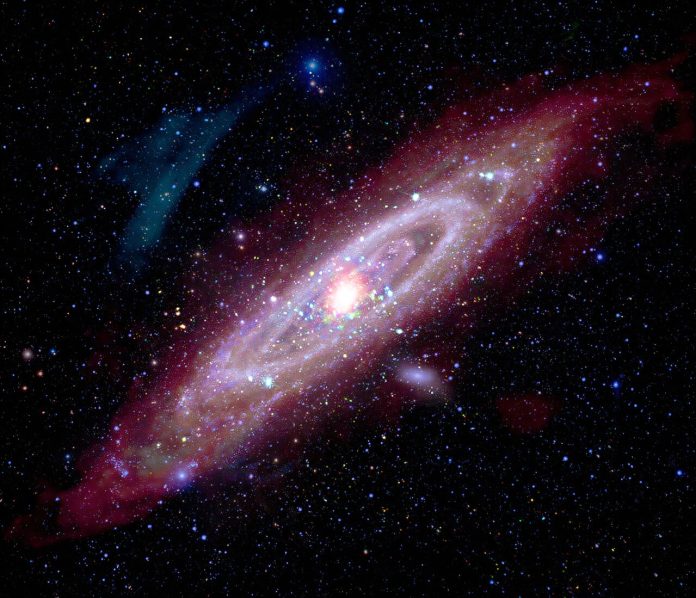
NASA has released a breathtaking new image of the Andromeda Galaxy, our closest galactic neighbor.
Also known as Messier 31, or M31, Andromeda is located about 2.5 million light-years from Earth.
Because it’s outside our own galaxy, it gives astronomers a clear view of what a spiral galaxy like the Milky Way looks like from the outside.
This new image is a colorful composite made using data from some of the most powerful telescopes on Earth and in space.
Each telescope captured Andromeda in different kinds of light, from high-energy X-rays to low-energy radio waves. These different types of light reveal hidden details about the galaxy that are invisible to the human eye.
The image combines X-ray data from NASA’s Chandra X-ray Observatory and the European Space Agency’s XMM-Newton (shown in red, green, and blue), ultraviolet light from NASA’s retired GALEX telescope (in blue), optical light captured by skilled astrophotographers on Earth, infrared light from NASA’s Spitzer Space Telescope and other infrared missions (in red, orange, and purple), and radio data from the Westerbork Synthesis Radio Telescope.
Each type of light reveals something special about Andromeda. For instance, X-rays from Chandra show high-energy areas near the galaxy’s center, including activity around the supermassive black hole and other dense, energetic objects scattered throughout.
In fact, one large flare was spotted in 2013, offering a glimpse into the black hole’s changing behavior.
But this image isn’t just about visuals. NASA has also released a sonification—a musical version of the image. Scientists turned the data into sound, assigning different pitches and volumes to represent the various types of light. X-rays are the highest notes, radio waves are the lowest, and the brightness of each area affects how loud the sounds are. The result is a fascinating, musical journey through the galaxy from left to right.
This tribute to Andromeda also honors one of the most influential astronomers in history: Dr. Vera Rubin. In the 1960s, Rubin studied the way Andromeda rotates and discovered that something invisible was affecting the galaxy’s motion. This mysterious force became known as dark matter, and her research forever changed our understanding of the universe.
To celebrate her legacy, the U.S. Mint released a commemorative quarter in 2025 featuring Dr. Rubin as part of the American Women Quarters Program. She is the first astronomer to be featured in the series, recognizing her groundbreaking work and her lasting impact on science.
Thanks to Rubin’s discoveries and NASA’s new view of Andromeda, we continue to explore the cosmos with a deeper sense of wonder and understanding.
Source: KSR.



